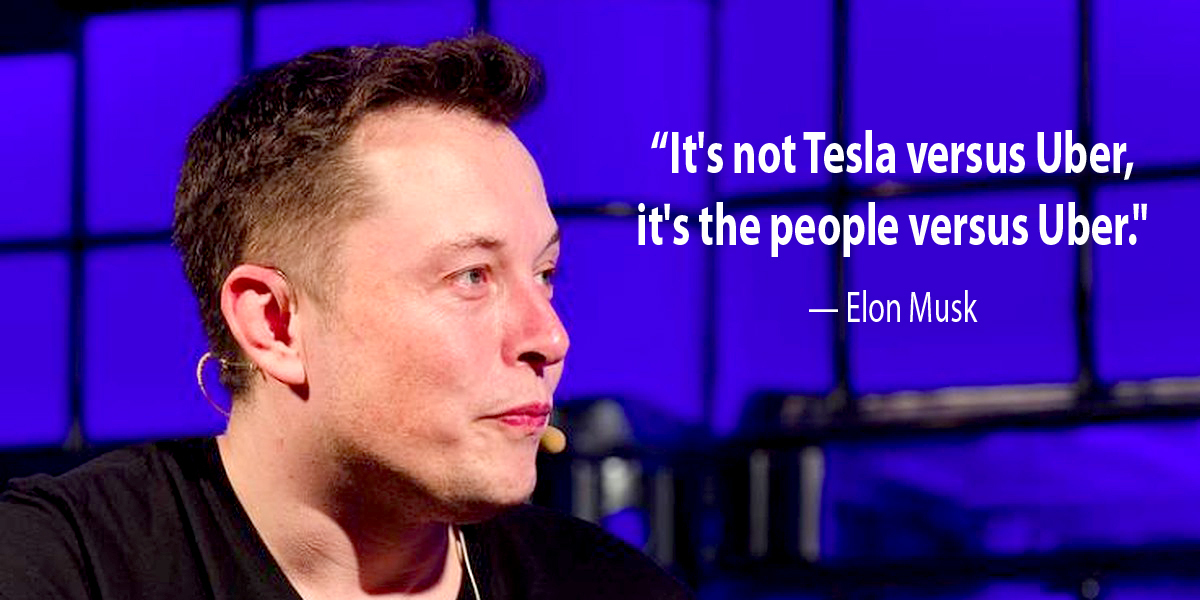

Here’s another thing that Elon Musk is on the verge of disrupting: Ride-sharing.
The Tesla CEO is already shaking up the global automobile industry with his fleet of electric cars, but now he’s taking aim at ride-hailing services such as Uber and Lyft by creating his own car-sharing network—the so-called “Tesla Network.”

On an Q3 earnings call on Wednesday, Musk said that future Tesla owners will be able to make money off their cars by renting them out for ride shares by using Tesla’s Autopilot feature, its famed semi-autonomous driving system.
“This would be something that would be a significant offset on the cost of ownership for a car, and a revenue generator for Tesla as well, but the majority of the revenue would go to owners,” he said, according to TechCrunch.
“This has been characterized as Tesla vs. Uber,” Musk added. “But it’s not Tesla versus Uber, it’s the people versus Uber.”
Musk means that Tesla owners will not be using their car’s self-driving function to give Uber or Lyft rides. Rather, Tesla owners—or “the people”—are competing directly against these companies.
Musk has seemingly confirmed the creation of the Tesla ride-sharing after retweeting TechCrunch’s writeup.
Musk on Tesla Network: "It's not Tesla vs․ Uber, it's the people vs․ U… https://t.co/UZoyRP6mY5 by @etherington pic.twitter.com/gqjh6qy9n1
— TechCrunch (@TechCrunch) October 26, 2016
Just think, if the Tesla Network actually comes to fruition, a Tesla owner can make money by giving autonomous rides to the public while he or she is at work or on vacation. Instead of taking up space in a parking spot, the car can help ferry people from A to B.
However you feel about autonomous vehicles (here are some pros and cons) this nascent technology can be environmentally friendly.
“The key benefit of a self-driving vehicles is greater fuel efficiency,” as EcoWatch’s Dan Zukowski wrote recently. “The computer can drive better than you can. It will drive at a steady speed, will avoid jackrabbit starts and won’t exceed the speed limit. Ultimately, a preponderance of autonomous vehicles could reduce traffic congestion by communicating with each other and traveling together in a controlled caravan. Car-sharing and carpooling make for more efficient use of roadways, vehicles and infrastructure devoted to parking.”
Musk actually proposed his ride-sharing network idea back in July in his “Master Plan, Part Deux.” He wrote:
“When true self-driving is approved by regulators, it will mean that you will be able to summon your Tesla from pretty much anywhere. Once it picks you up, you will be able to sleep, read or do anything else enroute to your destination.
“You will also be able to add your car to the Tesla shared fleet just by tapping a button on the Tesla phone app and have it generate income for you while you’re at work or on vacation, significantly offsetting and at times potentially exceeding the monthly loan or lease cost. This dramatically lowers the true cost of ownership to the point where almost anyone could own a Tesla. Since most cars are only in use by their owner for 5% to 10% of the day, the fundamental economic utility of a true self-driving car is likely to be several times that of a car which is not.
“In cities where demand exceeds the supply of customer-owned cars, Tesla will operate its own fleet, ensuring you can always hail a ride from us no matter where you are.”
Also on yesterday’s earnings call, Tesla Motors reported its first quarterly net profit in more than three years. According to Fortune, Tesla posted a net income of $21.9 million and total revenue more than doubled to $2.30 billion.
“Record deliveries helped to offset rising expenses related to next year’s roll-out of the company’s mass-market Model 3 sedan,” Forbes wrote.
Musk said the company could turn a profit again in the fourth quarter. Reuters noted that Tesla’s positive earnings report should calm skeptics who have criticized the automaker’s plans to acquire solar panel sister company SolarCity.

 233k
233k  41k
41k  Subscribe
Subscribe 